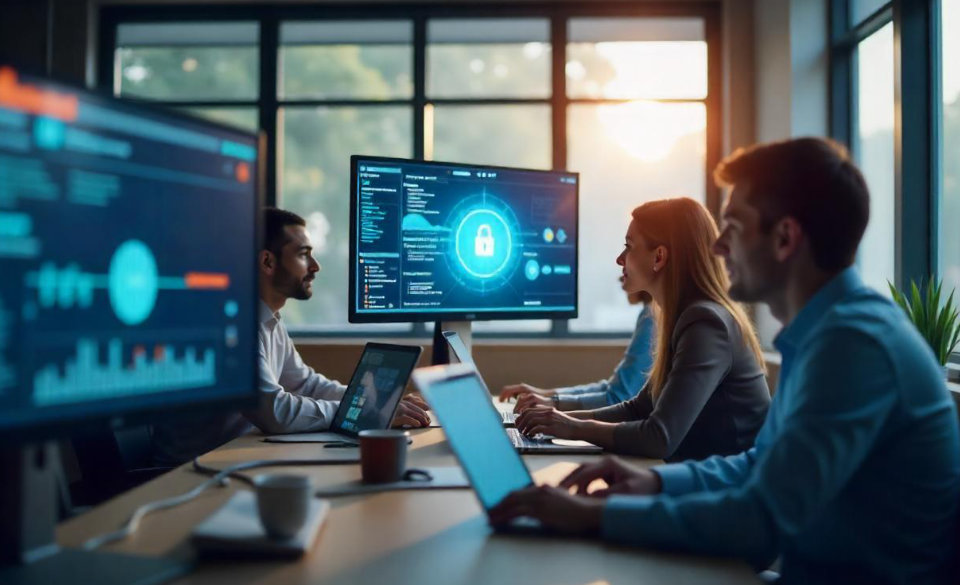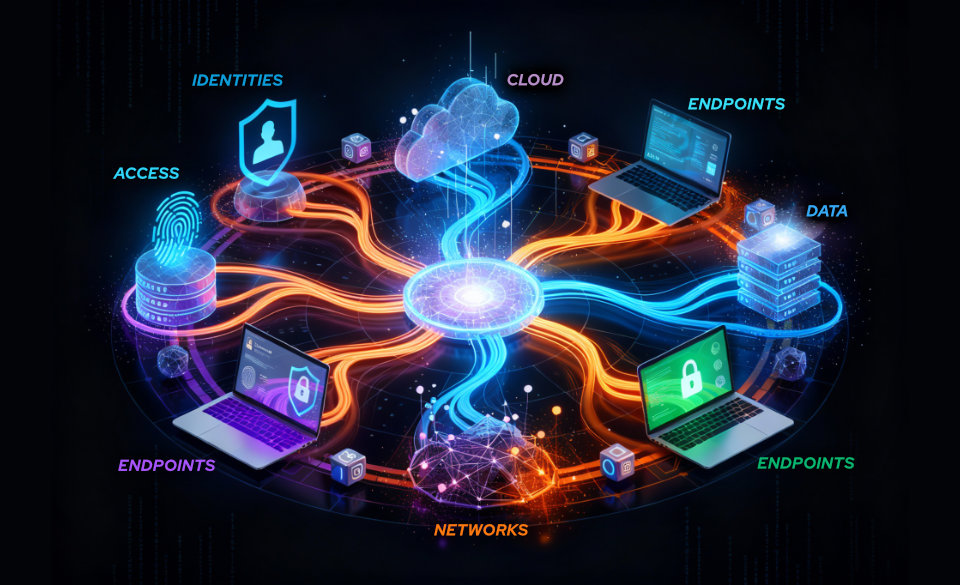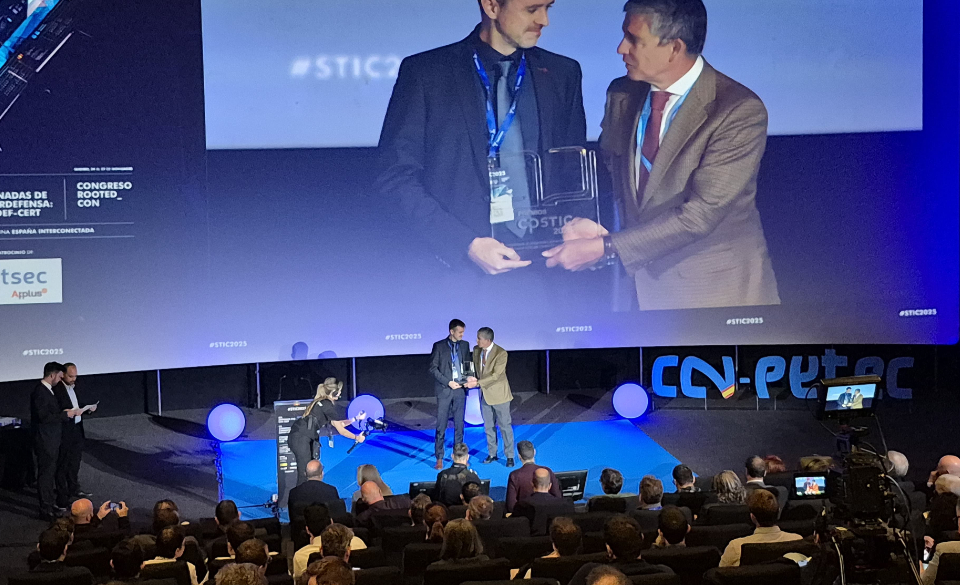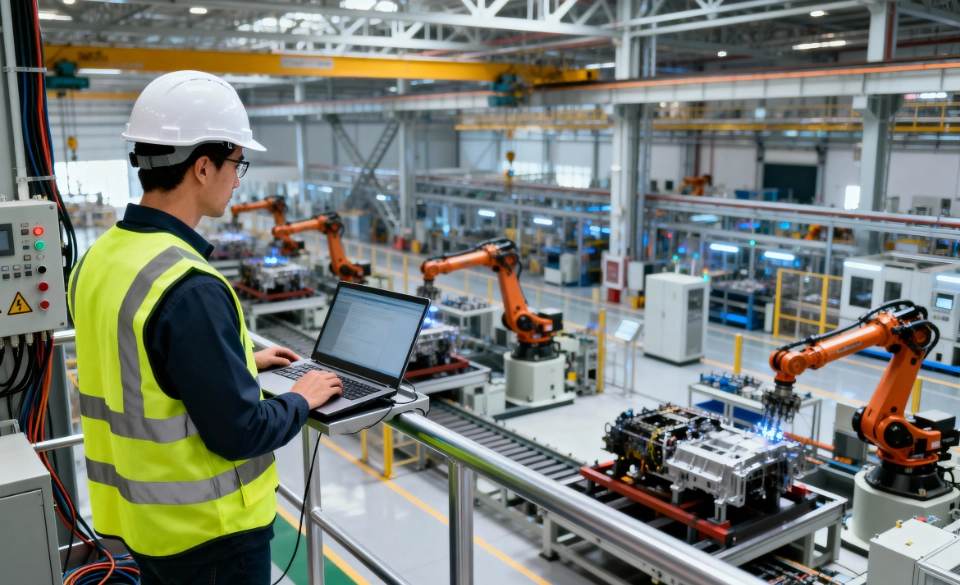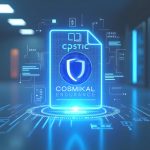
CPSTIC: The State’s Technical Guarantee to Protect Critical Systems
22 de May de 2025
Efficiency, security, and savings in Call Centers
5 de June de 2025In 2025, SMEs can no longer use their size as an excuse to avoid investing in digital protection. The data speaks for itself: 43% of cyberattacks globally target small and medium-sized businesses. And even more concerning: 60% of SMEs that suffer a serious cyberattack shut down within six months (according to the Cibercrime magazine). The situation is clear: cybercriminals know that SMEs are more vulnerable, with lower security investments and more exposed technical structures. That’s why securing access to systems and protecting critical data must be an absolute priority.
Where should an SME start if it wants to protect itself?
1.Know its real exposure
Many SMEs use cloud applications, remote connections (RDP, SSH, VPN), shared access to databases or control systems. Without a basic audit of what’s exposed to the internet and who has access to what, the company is flying blind.
2.Train its employees
91% of successful cyberattacks begin with human error: phishing, improper downloads, weak passwords, or misconfigurations. Investing in training is not an expense—it reduces the main attack vector.
3.Adopt cybersecurity tools suited to its size
Not all market solutions are accessible for SMEs. But there are advanced technologies that, thanks to flexible and cloud-based deployment models, are now within reach of companies with 5, 20, or 100 employees.
What tools are the most secure SMEs using in 2025?
Below are the most adopted technologies by SMEs that have taken the leap to real protection:
| Technology | Main Function |
| Antivirus with EDR | Protects against advanced malware. |
| NGFW Firewall | Blocks unauthorized external access. |
| VPN or ZTNA | Secures remote connections. |
| MFA + Password Manager | Secures access to key accounts. |
| Cloud Backup + Retention | Prevents data loss. |
| Modern PAM (Privileged Access Management) | Controls critical access and protects key systems. |
One standout tool in this table was previously exclusive to large corporations: PAM. Its adoption by SMEs is a clear trend in 2025 for a simple reason: most of the most destructive attacks occur via poorly managed remote access.
Why is PAM now essential for small businesses too?
The most common mistake SMEs make is relying solely on a VPN or strong password to protect critical environments. However:
- 80% of security breaches are related to credential misuse.
- 60% of attacks on industrial (OT) networks begin with insecure access from outside the organization.
- Privileged credentials cost between $10 and $100 on the dark web. They’re easy to get and extremely valuable.
A modern PAM eliminates this risk by mediating, recording, auditing, and limiting each remote session to critical environments, without exposing credentials, without leaving tamperable traces, and without allowing lateral movement.
Endurance: High-Level Technology, Finally Within Reach of SMEs
Endurance represents a new paradigm in asset access protection—a hardened workspace with PAM, VDI, DLP functionalities and more. It’s built with the latest technology, ensuring the security of large infrastructures, but with an architecture that enables small and medium businesses to access cutting-edge tech without complications.
Unifying technologies like PAM, VDI, and DLP in a single solution is a major differentiator, as it enables comprehensive, consistent, and seamless protection, where access, work environment, and asset management are controlled from one point.
This reduces operational complexity, eliminates the need for disconnected tools, and enables quicker responses to security incidents. It also improves technical team efficiency, reduces costs, and ensures a secure, smooth user experience, something essential for SMEs that can’t afford oversized IT departments.
What makes Endurance different?
- Unifies technologies offering a versatile solution.
- The user does not know the credentials.
- Does not require VPNs or opening dangerous ports.
- Isolates the asset from the user with secure virtual desktops (VDI).
- Records every session for forensic auditing.
- Prevents data leaks—even if the user has logical access.
- Requires no agents on protected systems.
The key to its success lies in the shielded workspace model, where the asset is never truly exposed. It doesn’t matter if it’s a database, an industrial SCADA, a network console, or a Windows server.
And the cost? Is it really affordable for an SME?
Yes. Endurance is designed to democratize access to advanced cybersecurity. Deployment is fast, the learning curve is low, and the licensing model is modular allowing businesses to pay only for what they need.
This means a company with just 10 technicians or a single critical system can still protect itself like a global enterprise.
In 2025, protecting assets with elite technology is no longer exclusive to large corporations.
Conclusion
Cybersecurity doesn’t depend on company size, it depends on the decision to act in time. Threats don’t distinguish between a 10-employee SME and a global firm. What does make a difference is having tools like Endurance, which enable the deployment of high-end technology with ease and realistic cost.
Cosmikal Ecosystem
More and more SMEs are adopting complementary solutions like Thinclient or Thincos. These solutions are designed for secure, centralized environments, allowing companies to replace traditional equipment with more efficient, easier to manage, and much more secure terminals against cyberattacks.
Thinclient is a compact and robust device optimized to provide secure access to work environments. Unlike a traditional PC, it reduces or eliminates moving parts (fans, hard drives…), significantly improving energy efficiency and minimizing security risks.
Its operating system, Thincos, offers an efficient and secure computing experience, fast boot, and centralized management. This OS adapts to the client’s needs and drastically reduces the attack surface against threats. Thincos is downloaded and synchronized from a centralized service.
These kinds of solutions not only enhance cybersecurity but also offer energy savings, reduced maintenance, and longer hardware durability.
Combined with Endurance, they allow an SME to achieve a protection and performance level equivalent to a large corporation, but with a cost tailored to their reality.

